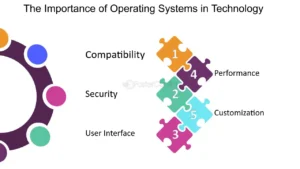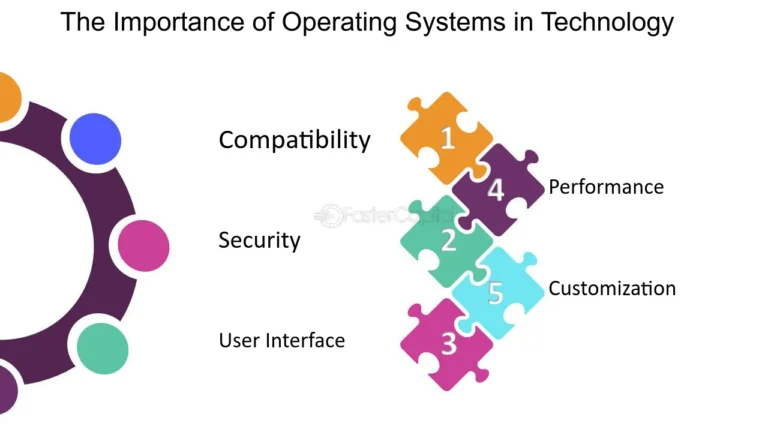In today’s fast-paced world of technology, understanding new tools and methods is crucial for developers. One exciting development is the concept of virtual threads, introduced in Java through Project Loom. This article will help you understand virtual threads, how they work, their benefits, and the truths behind some common myths. We will also explore real-world examples and best practices to make the most of this technology. Let’s break it down into simple sections.
Understanding Virtual Threads
What Are Virtual Threads?
Virtual threads are a new kind of lightweight thread that makes programming in Java easier and more efficient. They are part of something called Project Loom, which is designed to help developers write code that can handle many tasks at once without getting too complicated.
Unlike regular threads, which are managed by your computer’s operating system, virtual threads are taken care of by the Java Virtual Machine (JVM). This means you can create many virtual threads without worrying about using too much memory or slowing down your program. Imagine a school with many classrooms (the threads) and a great principal (the JVM) who makes sure all the classrooms are well organized and functioning without too much chaos.
In traditional programming, each thread can take up a lot of space in memory because they have their own resources. However, virtual threads share resources, allowing more of them to exist at once without the same overhead. This feature allows developers to build applications that can do a lot at the same time, making their programs faster and more efficient.
The Need for Virtual Threads
Why do we even need virtual threads? Well, traditional threads can be a bit heavy and tricky to manage. When developers try to use many threads at once, they often run into problems like slow performance and memory issues.
You can also visit our other articles: https://searchingwikies.com/uncategorized/demystifying-virtual-thread-performance/
Imagine you’re in a playground with only a few swings. If too many kids want to swing at the same time, some will have to wait, and the swings may get tangled up. Similarly, traditional threads can get stuck waiting for each other to finish tasks, which can slow everything down.
With virtual threads, this waiting problem is minimized. They make it easier to write programs that can handle many tasks without getting bogged down. This helps developers focus on building great features instead of spending lots of time worrying about how to manage threads. Overall, virtual threads help create a smoother experience for both developers and users.
How Do Virtual Threads Work?
Now, let’s talk about how these virtual threads work. They use a clever trick called “continuations.” When a virtual thread is busy waiting for something, like a file to load or a webpage to respond, it can pause and let other threads run instead. This means while one thread is taking a break, others can keep working, making sure everything runs smoothly.
Think of it like a relay race where the runner hands off the baton to the next runner when they get tired. The other runners can keep going while the first one takes a quick breather. This helps keep the race fast and exciting!
In simple terms, virtual threads allow developers to write code that can handle many things at once without waiting around. This results in faster and more responsive applications, making users happy.
The Role of the Java Virtual Machine
The Java Virtual Machine (JVM) plays a very important part in managing virtual threads. By handling all the behind-the-scenes work for virtual threads, the JVM ensures that everything runs smoothly and efficiently. It uses its memory management systems to help virtual threads share resources without causing problems.
Since the JVM can manage thousands or even millions of virtual threads at the same time, it opens the door to new possibilities for developers. They can create applications that can handle lots of users and tasks without crashing or slowing down.
In summary, virtual threads work together with the JVM to provide a powerful and efficient way to manage concurrency in programming. This combination makes it easier for developers to write high-performance applications.
Performance Metrics for Virtual Threads
When looking at how well virtual threads perform, we need to consider some important measures. Understanding these metrics helps us see how virtual threads can make our applications better.
Throughput
Throughput is all about how many tasks can be completed in a certain amount of time. For virtual threads, we can measure throughput by checking how many requests a server can handle simultaneously. This is especially important for web servers that need to respond quickly to many users at once.
Virtual threads really shine in situations where there’s a lot of I/O (Input/Output) work happening, like waiting for data from the internet. In these cases, virtual threads can do a fantastic job of increasing the number of tasks completed in a given time. This makes applications faster and more efficient, giving users a better experience.
Latency
Latency measures how long it takes to finish a single task. Virtual threads can help reduce latency, especially when tasks have to wait for something to happen, like waiting for data from a server.
Because virtual threads can yield control back to the JVM when they’re waiting, the overall response time for applications can improve significantly. This means users will notice that their applications are faster and more responsive, which is always a good thing!
In summary, lower latency means a better experience for users because they don’t have to wait long for their tasks to be completed.
Resource Utilization
Resource utilization refers to how well a program uses the available resources like CPU (the brain of the computer) and memory. One of the best things about virtual threads is that they help make better use of these resources.
Since virtual threads have less overhead compared to traditional threads, they can help save memory and CPU usage. This is especially useful in modern applications that need to run efficiently, like those based on microservices architecture.
By allowing many virtual threads to run at the same time without hogging resources, developers can create applications that perform better and cost less to run.
Scalability
Scalability is an essential factor for applications today, especially those that run in the cloud. When traffic spikes suddenly, applications need to handle many more requests without falling apart.
Virtual threads make scaling applications much easier. Developers can create applications that can grow or shrink as needed, allowing for better performance during busy times. This flexibility is crucial for maintaining a smooth user experience.
In short, virtual threads enhance scalability, allowing applications to grow efficiently without requiring excessive resources, which is vital for modern app development.
Comparing Virtual Threads with Traditional Threads
Thread Management
Traditional threads depend heavily on the operating system for management. This can lead to delays and significant overhead because managing many threads at once can get tricky. Each time a thread switches, the system has to save its state and load another thread’s state, which takes time and energy.
On the other hand, virtual threads are managed by the JVM, which reduces the overhead related to context switching. This allows developers to manage many more threads without the same issues, leading to smoother and faster applications.
Memory Consumption
One of the most significant differences between traditional and virtual threads is memory consumption. Traditional threads require a lot of memory because each thread has its own stack space. This can quickly add up, especially if a program needs to create many threads.
Virtual threads are smarter. They share resources, meaning they use less memory overall. This is essential when dealing with applications that need to create thousands of concurrent threads, as it helps prevent memory overload and keeps applications running smoothly.
Performance Under Load
When faced with heavy loads, traditional threads can struggle. They often hit a wall due to their limitations in managing many concurrent threads, which can lead to crashes or slowdowns.
In contrast, virtual threads can handle high loads much better. They are designed to scale efficiently, so even when many tasks need to be processed simultaneously, they can maintain performance levels. This makes virtual threads a great choice for server applications and microservices that must manage multiple requests without breaking a sweat.
Simplicity of Code
One of the best things about virtual threads is how they simplify the coding process. Traditional threading can lead to complicated code with many callbacks and error-handling issues. This can make understanding and maintaining the code challenging for developers.
With virtual threads, writing concurrent code becomes much easier. Developers can write sequential code, making it simpler to read and manage. This improvement leads to higher code quality, as it reduces the chances of bugs and errors.
In summary, virtual threads provide a more straightforward programming model that enhances developer productivity and leads to better code.
Myths and Misconceptions About Virtual Threads
Even though virtual threads offer many advantages, some myths and misconceptions can confuse developers. It’s essential to clear these up to make informed decisions about using virtual threads.
Myth: Virtual Threads Are Always Faster
Many people believe that virtual threads are always faster than traditional threads. While they can significantly improve performance in many scenarios, they are not a magical solution for every situation.
For example, in CPU-bound tasks, where the processing power of the CPU is the limiting factor, traditional threads might perform better. It’s essential to understand the nature of your application and workload to determine whether virtual threads are the right choice.
Myth: Virtual Threads Eliminate All Concurrency Issues
Another common myth is that virtual threads solve all concurrency problems. While they make it easier to manage concurrency, developers still need to be aware of potential issues like race conditions and deadlocks.
Even with virtual threads, understanding concurrency principles remains important. While virtual threads simplify the coding process, they don’t magically make concurrency problems disappear.
Myth: Virtual Threads Are Just a Java Feature
Some people think that virtual threads are unique to Java and that other programming languages don’t have similar features. However, this is not true. Many other programming languages and frameworks have adopted similar lightweight thread models to address concurrency challenges in modern applications.
Myth: Virtual Threads Are Only for High-Load Applications
While virtual threads perform exceptionally well in high-load scenarios, they are not exclusive to such use cases. Even smaller applications can benefit from virtual threads due to their resource efficiency and simplified programming model.
Using virtual threads can enhance code readability and maintainability, making them valuable for various projects, regardless of their scale.
Real-World Applications of Virtual Threads
Web Servers and Microservices
One of the most exciting applications of virtual threads is in web servers and microservices architecture. Virtual threads allow servers to handle a large number of incoming requests simultaneously without significant resource usage. This is particularly valuable for modern applications that need to scale up and down rapidly based on user demand.
For example, a cloud-based application can use virtual threads to create a smooth user experience, even when thousands of users are accessing it simultaneously. By efficiently managing resources, these applications can provide faster response times, keeping users satisfied.
Reactive Programming
Virtual threads also play a significant role in reactive programming, which focuses on building applications that respond to events in real-time. In a reactive system, virtual threads help manage numerous tasks while keeping the code clean and easy to understand.
By using virtual threads, developers can write responsive applications without the complexities of traditional threading models. This makes it easier to create features like real-time notifications, instant messaging, and dynamic updates, all of which enhance user experience.
High-Performance Computing
High-performance computing (HPC) environments often require managing a vast number of simultaneous tasks. Virtual threads excel in these scenarios because they can help maximize resource usage while keeping the overhead low.
In scientific research, simulations, and data processing tasks, virtual threads enable researchers to perform complex computations efficiently. This allows for faster results, which can be crucial in time-sensitive projects.
Best Practices for Using Virtual Threads
Assess Application Requirements
Before jumping into using virtual threads, it’s crucial to assess the needs of your application. Understanding the workload and the nature of the tasks will help you determine whether virtual threads are the right fit.
For I/O-bound tasks, such as handling network requests or reading/writing files, virtual threads can significantly improve performance. However, for CPU-bound tasks, traditional threading might be more suitable.
Leverage Thread Pools
When using virtual threads, consider leveraging thread pools to manage resources effectively. Thread pools can help control the number of active virtual threads, preventing resource overload and ensuring optimal performance.
By configuring thread pools based on application requirements, you can strike the right balance between concurrency and resource utilization.
Monitor Performance
As with any performance improvement strategy, it’s essential to monitor the performance of applications using virtual threads. Collect metrics like throughput, latency, and resource utilization to identify potential bottlenecks and optimize performance further.
Monitoring tools can help track performance in real-time, allowing developers to make informed decisions about optimizing their applications.
Stay Informed
The field of technology is always evolving, and new best practices and techniques are continually emerging. Stay informed about updates and advancements related to virtual threads and concurrency in Java to ensure you’re using the latest and most effective approaches.
Join communities, read articles, and follow experts to learn from their experiences and insights. This knowledge will empower you to make better decisions for your applications.
Conclusion
In conclusion, virtual threads represent a significant advancement in how we manage concurrency in Java applications. They provide developers with a powerful and efficient way to write code that handles many tasks simultaneously while simplifying the programming process.
By understanding the performance metrics, comparing virtual threads with traditional threads, and debunking common myths, developers can make informed decisions about leveraging this technology.
As we move towards a more connected and demanding digital landscape, virtual threads will play a crucial role in ensuring applications remain responsive, efficient, and scalable. Embrace the power of virtual threads, and let them help you create amazing applications that meet the needs of users today and in the future.













